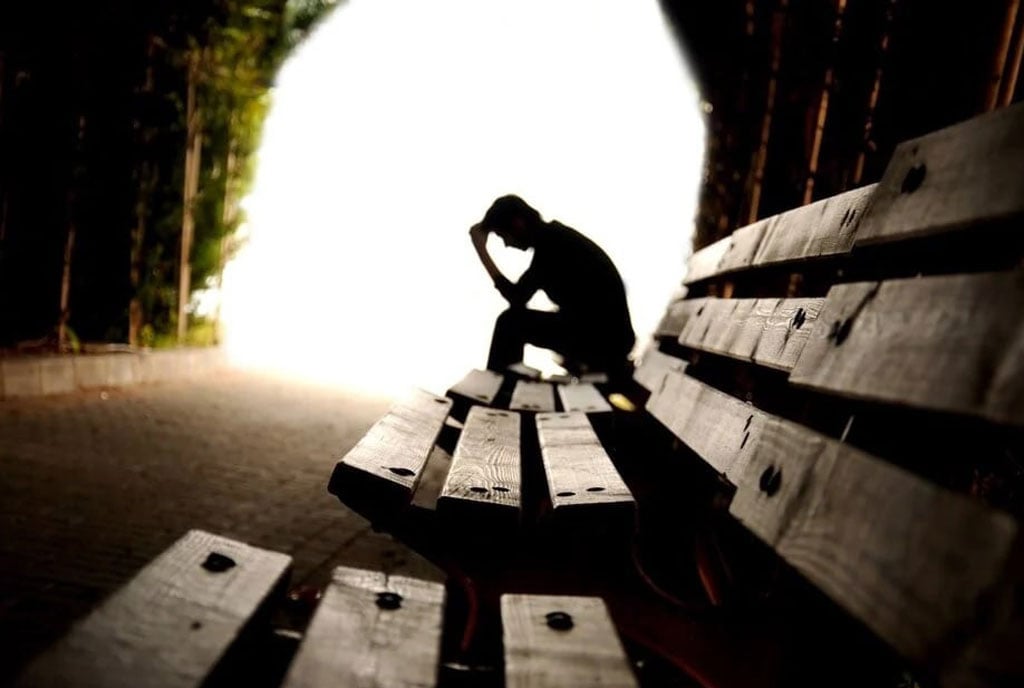
Reports indicate that 14 million Ugandans are affected by mental health challenges whereas fewer men have health-seeking behaviours than women and most suicides occur among people between the ages of 15 and 29 years. PHOTO/FILE
In June this year, Kampala registered the highest cases of suicides in a single month, most of them involving high-profile individuals.
Mr Luke Owoyesigyire, the Kampala Metropolitan Police deputy spokesperson, said four of seven incidents were registered in a single day on Martyrs' Day in Bulenga, Katwe, and Kira, all city suburbs.
Two other individuals died by hanging, while an Asian died after falling off the fourth flour of Skyz Hotel in Naguru, a city suburb. Another reportedly jumped off level two of Tagore Living at Kamwokya, another city suburb
The June record only compares to November last year when the police registered two suicide cases in the same month.
The police said most of the affected persons were male between 30 and 40 years old, with the suicide cases occurring in close succession to each other.
“We appeal to the members of the public to always seek help when they face challenges because we’re seeing a sharp rise in the numbers of suicides. At the weekend, we registered an ICT specialist who jumped off a building and shattered his limps,” Mr Luke Owoyesigyire said during the police briefing when Kampala registered the four suicide cases on the same day.
Last November, a nine-year-old pupil in Kyanzanga, Lwengo District, died by suicide after reportedly being detained by her school for the failure of his parents to clear a fee balance of Shs100,000.
On December 26, 2016, Ms Christine Bamuwalisa, a 30-year-old resident of Wakitaka in Jinja, said she attempted suicide at the Namboole flyover in Kampala after episodes of stress and depression.
Police data on suicide
Every year, the police respond to and process about 530 suicide crime scenes, an analysis by this publication of police annual crime reports between 2019 and 2021 reveals.
The 2019 Annual Police Crime Report shows that 456 suicide scenes were processed, and 223 attempted suicide cases were reported, signaling a sharp rise in deaths by suicide in the country.
The 2020 Annual Crime Report indicates that 168 attempted suicide cases were reported. However, the police say they did not register any serious cases of suicide attempts in the past two years.
Experts speak out
Several experts interviewed for this story said several issues might be responsible for the rising cases of suicide.
Dr Kenneth Kalani, a psychiatrist and senior medical officer at the Ministry of Health, says when suicide rates increase, it indicates a real challenge in society.
“As a country, we are facing a lot of mental health challenges. The citizens are experiencing significant mental health issues, and are dealing with mental health issues that need to be addressed,” he says.
Dr Kalani attributes the suicides reported in June to depression, anxiety, alcohol, and substance use, which he says are common mental health issues associated with high suicide rates. He adds that many suicide cases happen in our communities but go unreported.
Medic warns media
Dr Kalani says some people end up taking their lives after picking up methods from the media.
“Sometimes people have what you call suicidal ideations or thoughts about ending their lives. But they are not sure how to do this or what method to use. So once they notice a method someone has used successfully, they pick it up,” he says.
Dr Kalani adds: “If someone of high profile or high standing dies by suicide, others may compare and see if it will work for them. Journalists and the media should be responsible when reporting about suicide; some of these new methods should not be reported in the media.”
More men die by suicide
Mr Daniel Lubanga, the Mental Health Uganda programme manager, says in two years, their hotlines registered about 4,000 calls, of which 52 percent were from men and 48 percent from women seeking counselling.
“Women are contemplating suicide more, but men complete suicides about three times more than women. I don’t know if science has proven this, but we see that men, even in general health practice, disclose less,” Mr Lubanga says.
“Men have fewer health-seeking behaviours, but women speak out more when they are struggling. They often have a friend or someone they can talk to, and although they consider suicide because they talk to someone, they find hope for the next day,” he adds.
What explains the numbers?
What is worth noting is that the prevalence of mental health conditions in Uganda has increased compared to other low and middle-income countries. A Lancet psychiatry correspondence in 2022 reported that close to 14 million people out of a population of 44 million were affected by mental health conditions in the country.
This is why, Dr Kalani says, every single year, Ministry of Health trains journalists on how to report suicide cases, cautioning them against revealing new methods to the public.
Dr Derrick Kizza Mbuga, the executive director of Mental Health Uganda, urges the government to decriminalise suicide.
Suicide and the law
“Any person who attempts to kill himself or herself commits a misdemeanour. The general punishment for misdemeanours, pursuant to Section 22 of the Penal Code Act Chapter 120, is imprisonment for a period not exceeding two years. People who attempt suicide are likely to be charged. They should remove it from the Penal Code Act,” Dr Kizza says.
The issue, the doctor says, is that most of the people who attempt suicide are looked at as criminals and taken to jail. They do not receive the emotional support they need. When that person comes back, they have not healed and are likely to attempt suicide again.
Dr Kizza says despite the legislation, the number of suicides or attempted suicides is soaring daily. He said the key triggers include unemployment, job loss, drug abuse, alcohol use, and social media.
“Exposure to social media, especially regarding things happening in Parliament, mainly corruption, triggers depression and stress. When people sit down and think about it, they imagine such things and the huge sums of money involved,” he says.
“Some people see others' positive messages when they are happy, which can be emotionally hostile to someone who did not have a meal last night. Social media, in general, is a hostile environment. I don't know if a study has been done to see the impact of social media, but online bullying and harassment are major triggers for mental health problems, especially among the young people,” he adds.
Dr Kizza says the triggers of suicides, including cases of people copying can be addressed in various ways. He calls for support to people facing mental health challenges, and for journalists to do responsible reporting about suicide when it occurs. He warns that without the government, organisations, and the media doing this, the cases are bound to rise.
Survivor speaks out
Charity, not her real name, a university student who successfully healed from post-traumatic suicidal thoughts, says suicide can be avoided by having the right people who are willing to listen to a person facing serious challenges.
She recounts her experience of contemplating suicide after her first relationship failed.
“I had different thoughts running through my mind on how I would end my life in December 2018 after my first relationship failed. I would lock myself in my bedroom at campus, barely eating or drinking anything. I remember I attempted an overdose, and when it failed, I wanted to throw myself in front of a speeding car. I had many thoughts but I was looking for the best,” Charity says.
"We did everything together with him because he found me pure and I invested everything in him. I remember one time he asked me for some money to start a business, and I had to get it from my tuition. But I was betrayed after doing that,” she says.
Charity says she thought ending her life would leave her ex-boyfriend with the burden and pain of having pushed her to the edge. She says she searched for different methods on how to end her life without experiencing a lot of pain but failed.
“Everything around me was annoying. I didn’t want to talk to anyone. I shunned everyone and blocked most of my friends on WhatsApp, deleted my X [formerly Twitter] and Instagram accounts. I used to post everything about my lifestyle but went silent for some time. I would lock myself in my hostel room. I remember I even missed some exams at campus. At the university, no one cares,” she says.
Charity then registered a dead year to heal from the trauma. However, during that time, while on campus, a friend invited her to an evening fellowship at the university.
“That's how my life transformed through their counselling sessions and prayer sessions which were held on campus every Tuesday evening. I remember being attached to a woman of God in those fellowships who helped me. Now I sit down and laugh at myself for wanting to commit suicide over a man for whom Christ died,” she says.
40 seconds
Statistics from the World Health Organisation (WHO) indicate that a life is lost every 40 seconds globally to suicide, with most of the deaths occurring among people between 15 and 29 years. Seventy-seven percent of these victims come from low-developed countries, with more than 77 percent of the deaths occurring in lower and middle-income countries like Uganda.
The WHO report points out America with the highest level of suicide cases. It also points out imitation or copycat suicides as key triggers of the suicides, especially if the report is about a celebrity, or well-known person.
Copycat suicides occur when someone takes their life, and another person who gets to hear about it also does the same. Usually, the person who copies has been suffering mental illness and has previously been having suicidal thoughts as well.




